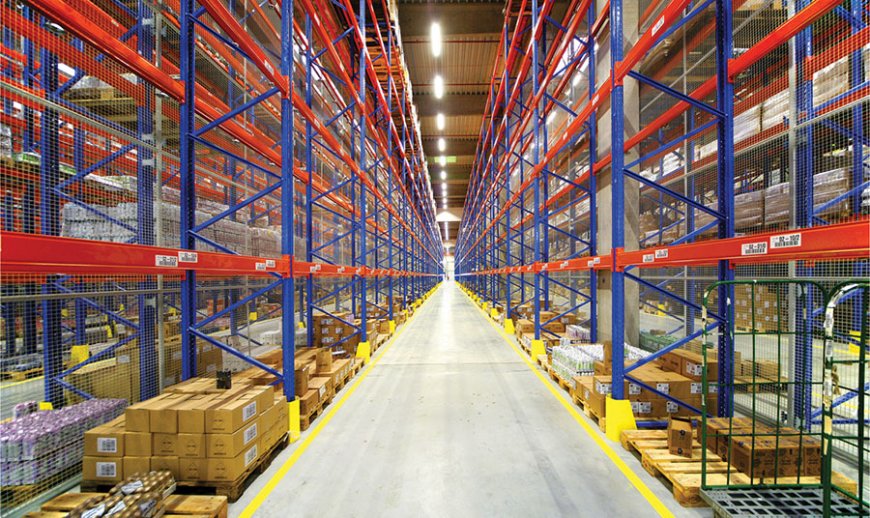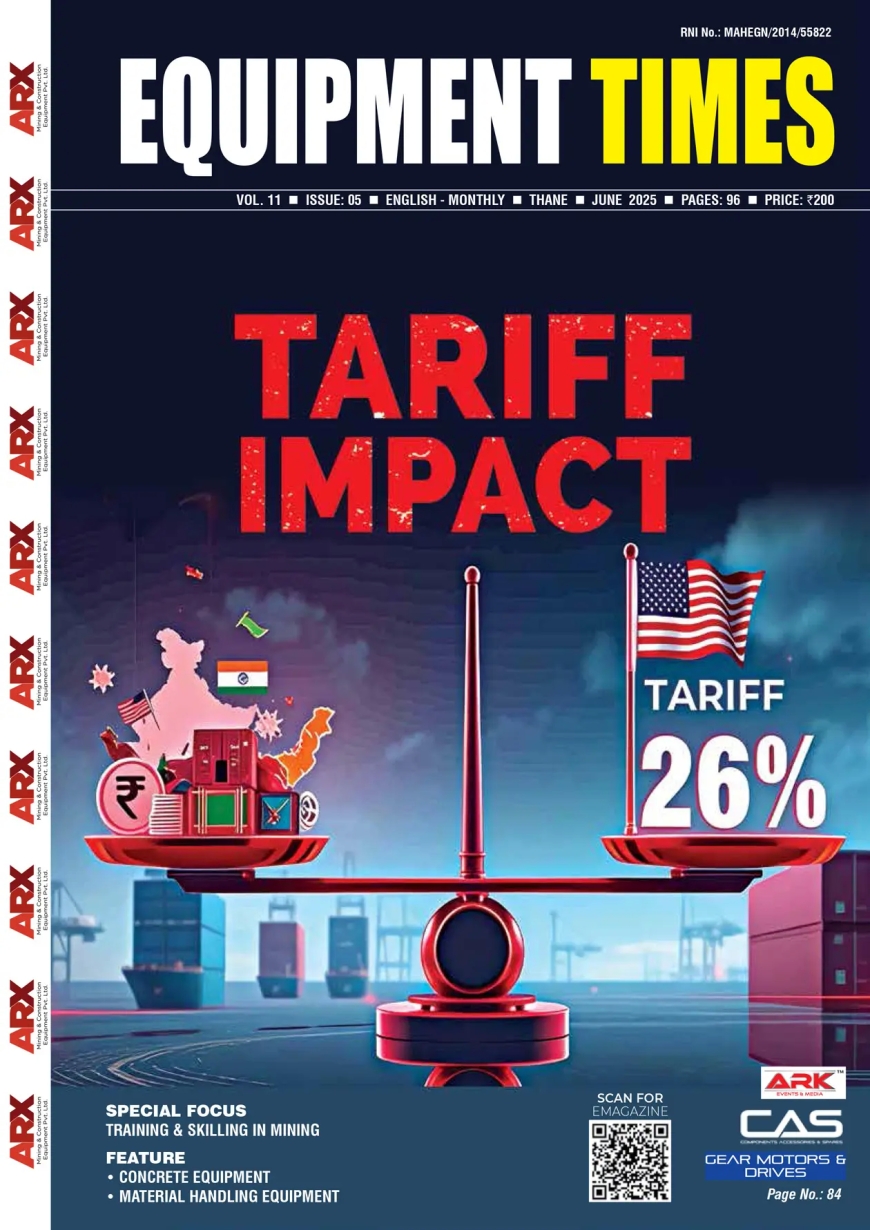Warehousing sector outlook for India post Covid-19
Warehousing, hence stands as an obvious beneficiary, thanks to multiple factors that rest in its favour, details of which this report will delve deeper into. The Premise Despite the present uncertainties the Indian government

Warehousing, hence stands as an obvious beneficiary, thanks to multiple factors that rest in its favour, details of which this report will delve deeper into.
The Premise
Despite the present uncertainties the Indian government and businesses will continue to work towards India’s aim of becoming a 5 trillion-dollar economy by 2025. For the country to achieve this target, for the ‘Make in India’ initiatives to succeed, and for India to be an important player in the global supply chain in a post globalization age; the rise of a robust logistics sector is imperative.
Even though we may witness a short term dip in overall consumption due to the pandemic, both the pent-up demand and category shift in buying patterns will lead to a guaranteed and consistent need for warehousing in India.
Post COVID-19, warehousing and logistics will emerge as one of the most crucial lifeline for India’s growth over the next 10-year horizon. Attributed to the increase in domestic demand and a possible major manufacturing shift, India will increasingly become ‘a preferred destination’ for global manufacturers.
Warehousing, hence stands as an obvious beneficiary, thanks to multiple factors that rest in its favour, details of which this report will delve deeper into.
Strong demand drivers
India faces a fundamental lack of Grade A warehousing with only under 90MM SFT** of Modern (Grade A) warehousing stock. Meanwhile, China in the last 15 years has grown to 750MM SFT of Grade A warehousing stock directly corresponding to the increase in per capita income. This growth commenced once China crossed the $2000 per capita income mark (where India is currently at).
Accelerated Adoption Of E-commerce
- Online grocers like Big Basket and Grofers have seen the demand for groceries and essentials upsurge by 3-5X compared to normal (according to Neilsen* in e-commerce, average orders surged for staples with edible oil growing by 106%, salty snacks by 84%, soft drink by 68% and biscuit by 31% on a weekly basis in the last one month, due to the COVID-19 impact).
- The fact that Big basket raised USD 60MM to fund their scaling of business operations,** is a clear indicator of Indian consumers’ shifting their preference towards e-commerce.
- This possibly could be due to panic buying, but some trends from China suggest that there was a 20% sustained demand even after the lockdown was lifted.
- Moreover, the transition of retail to online and larger inventories by e-commerce players, will speed up the warehousing demand further. The resulting impact will be felt substantially in demand for inner city logistics and cold chain facilities.
- E-commerce companies are already looking towards expansion: Amazon, USA announced that they are hiring additional 175,000 warehouse and delivery workers in March,** due to a surge in online orders amidst the corona virus outbreak. We are hearing similar stories from customers in India. Additionally, the Amazon stock price reached a record high of $2,474 per share on April 30th, 2020;** demonstrating the confidence of Global markets in the e-commerce sector.
Greater Displacement Demand:
Companies will prefer Grade A facilities that offer compliance, human safety, hygiene and enable automation while practicing social distancing even after the lockdown is relaxed / lifted. We estimate that this will lead to an additional Y-O-Y demand for Grade A facilities by 25% over the earlier predicted demand, even if only 35% of new occupiers switch their preference to Grade A warehouses.
Inventory Stockpiling:
- Companies will quickly consider refining their inventory strategy to mitigate risks of supply shortage, by increasing inventory stockpiling. This will create immediate increase in warehousing demand in the manufacturing and consumption hot spots within the country.
- Additionally, soon companies will look at back up storage options in terms of large warehouses in Tier 2 & 3 markets, away from the highest affected Tier 1 cities, to further de-risk their supply chains.
Decentralized Demand Due To Rapid Digitization
- Due to digitization and the new norm of work from home, companies will consider diversifying their presence geographically. Offices and workers will potentially re-allocate resources to smaller cities, away from Mumbai, New Delhi, Ahmedabad, Jaipur, and other metros which have been most heavily affected during this pandemic.
- Due to the above, the re-allocation of white collared workforce to Tier 2 & 3 cities will significantly increase consumption and demand for warehousing. Cities with good infrastructure provisions like Nagpur, Bhopal, Ludhiana, Bhubaneswar, and Guwahati will be the new warehousing destinations of the future.
Agri Warehousing, The Non E-Commerce Scale
- Indian agricultural warehousing will be tested in the coming months, even as the expected slowdown in the economy and concerns related to liquidity will hit the farming and trading community at a time when India is about to harvest a bumper crop. The duration of storage of commodities in warehouses will take longer than usual, and scarcity of agricultural warehousing space will be seen in the coming months, generating colossal demand.
- As per industry estimates, the cold storage capacity itself needs to be increased by at least 40%** (Pre COVID-19 numbers). The emphasis on increasing this capacity will be foremost within the government purview – making it an attractive proposition for private investors.
Supply side dynamics
Distress / Non-Performing Assets (NPA): NPAs in real estate will increase as valuations will fall by at least 20% in the city centres and between 5-10% in preferred warehousing locations. Developers / corporates who are over leveraged due to high land prices will take a sizeable hit, leading to availability of distressed assets in certain locations.
Slightly Better Returns: A land price reduction of ~10% lower along with a cap rate reduction of ~0.5% will result in an IRR (Internal Rate of Return) jump of ~3% and a yield jump of ~0.3%, resulting IRR of ~23%-24%.
Reallocation Of Capital:
- Post COVID-19, fund managers will look at warehousing and industrial real estate as a safer, resilient and scalable asset class for their investors.
- Some of the capital already raised for residential, co-living / co-working, retail and hospitality will look at reallocating itself into warehousing and the data center space along with affordable housing.
Probable Shift In Supply Chain:
Occupiers with high dependency on goods from China have been heavily impacted from the slowdown in manufacturing and shipping.** It is likely that these business would now look at diversifying their supply chain when COVID-19 has been resolved, to ensure they are not entirely reliant on any one supplier hereon.
Future thoughts & macro economic impact
Owing to coronavirus outbreak in Wuhan, there is trust deficit in the Chinese ecosystem. In case European and American Corporations want to de-risk from China they have 3 options: South America, East Asia and India. In South America, Brazil is a viable option. However, it faces its own issues with occasional mis-governance and hyperinflation. East Asia, Vietnam, Cambodia and, Thailand are smaller countries with limited long-term opportunities. India thus emerges as the only viable option with a large English speaking & educated population, and with reasonable law & order in place.
When we move forward into the post COVID-19 era, it is conceivable to think that the government will leave no stone unturned to lure these multinational corporations in India. One of the most sought-after ways the Indian government will be able to employ our large educated demographic will be by relaxing labour laws and easier import-export terms. Given this scenario, with any export / manufacturing impetus – warehousing will become a necessity.
AFTERWARD
Even though there will be a short term dip in consumption demand over the next 6-9 months, combining all the above factors: rapid acceleration of e-commerce demands, greater displacement demand, inventory stock piling, increase in demand for agri-warehousing, category shift, mature national & state level government policies, insulation from credit risk and a more decentralized footprint – these are clear indicators that the warehousing sector will witness a boom.
Furthermore, land buying and supply creation is a time consuming process which would most likely collide perfectly to suit the timing of demand upswing – this will be enabled by the fact that the sector is prepared and ready with policies, infrastructure initiatives, and credit lines in place.
For India to progress, bridging the demand-supply gap, operating as per global standards, promoting inclusive growth & empowerment to increase India’s job quality index – the logistics industry plays a vital role and warehousing is a pivotal component of the same. Thus, Welspun One believes that even in this crisis, the warehousing and logistics sector hits the home run as one of the most crucial lifeline for India’s growth over the next 10-years.
Hits: 48








